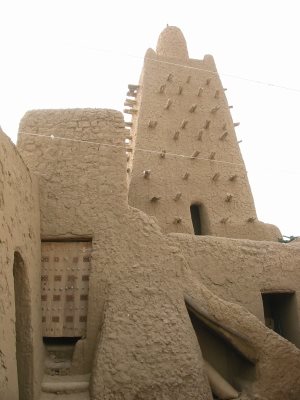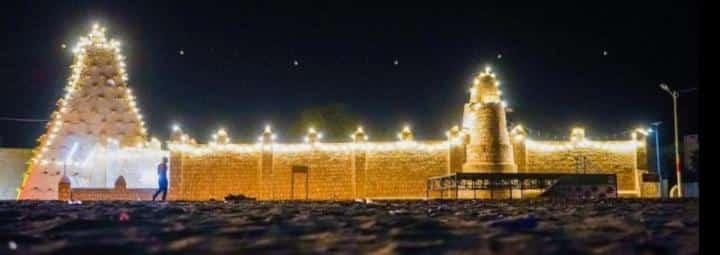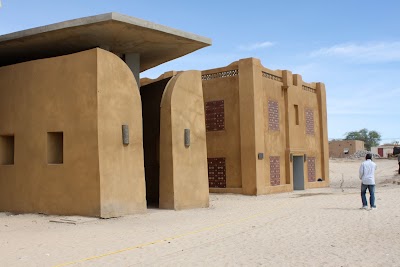Place of the Ancients (مكان الأجداد)
Overview
**Nestled in the Heart of History**
Nestled in the heart of the Tombouctou Region in Mali, the **Place of the Ancients** stands as a monumental testament to the rich cultural legacy of West Africa. This historic site is not only emblematic of Malian history but also serves as a beacon attracting global visitors intrigued by ancient civilizations, Sahelian heritage, and architectural marvels that have withstood the test of time.
**The Elders' Assembly Ground**
Often referred to as the **Elders' Assembly Ground**, the Place of the Ancients is believed to have been a focal point for communal and spiritual gatherings centuries ago. Historically, Tombouctou, or Timbuktu, was an eminent hub for Islamic scholarship and trade during the 15th and 16th centuries. The site’s history is deeply intertwined with the rise and fall of this legendary city, where wise elders, scholars, and merchants would gather to discuss philosophical ideas, resolve conflicts, and make pivotal decisions that shaped the region's destiny.
**Enduring Architectural Marvels**
One of the most striking features of the Place of the Ancients is its enduring architecture. The site is characterized by traditional mud structures built using sun-dried bricks and exceptional mortar techniques. These edifices reflect the iconic **Sudano-Sahelian architectural style**, marked by distinctive geometric patterns and wooden beams jutting out of the walls. Remarkably, these structures have been preserved and maintained over generations despite the harsh desert conditions, symbolizing the resilience of the Malian people and their craftsmanship.
**A Legacy of Knowledge**
The significance of the Place of the Ancients extends beyond its physical beauty. It represents the cultural and intellectual prosperity that once flourished in Tombouctou. At its zenith, the city attracted scholars and students from across Africa and the Middle East. Libraries overflowing with manuscripts and madrasas hosting vibrant academic discourses were commonplace. The Place of the Ancients served as an epicenter for the exchange of knowledge, fostering a legacy of learning and scholarship that continues to inspire generations.
**Step Back in Time**
For tourists, visiting the Place of the Ancients offers a unique opportunity to step back in time and envision a world where knowledge was a treasured commodity. Wander through the ancient pathways and let your imagination drift to the era when caravans from across the Sahara arrived laden with salt, gold, and wisdom. This profoundly enriching experience provides insights into the social, economic, and intellectual fabric of ancient Sahelian societies.
**Interactive Storytelling**
One of the most intriguing aspects for visitors is the **interactive storytelling sessions** conducted by local guides. These knowledgeable raconteurs, often descendants of the original inhabitants, share fascinating tales and folklore passed down through the ages. Their stories breathe life into the vibrant history of the Place of the Ancients, painting vivid pictures of legendary scholars, heroic figures, and epic sagas that continue to resonate today.
**Exploring Cultural Heritage**
Moreover, the surrounding area is steeped in cultural heritage. Nearby, you can explore the world-famous **Djinguereber Mosque**, an architectural marvel constructed in 1327, and the **Sankore Madrasah**, a UNESCO World Heritage site known for its educational prominence. These attractions, in conjunction with the Place of the Ancients, offer a comprehensive glimpse into the ancient city that once stood as a scholarly beacon in the Islamic world.
**Contemporary Cultural Preservation**
In addition to historical pursuits, the Place of the Ancients plays a pivotal role in contemporary cultural preservation. Various conservation efforts are ongoing to protect the site from desertification and the encroaching sands of the Sahara. By visiting this site, tourists contribute to these conservation efforts, helping ensure that future generations can witness and learn from this magnificent cultural monument.
**Best Time to Visit**
Before you go, it's helpful to know that the best time to visit is during the cooler months, from November to February. The extreme heat of the Sahara can be overwhelming at other times of the year. Travelers should also consider hiring local guides to enrich their experience with in-depth historical context and detailed narratives that are not readily available in guidebooks.
**A Journey Through Time**
In conclusion, the Place of the Ancients in the Tombouctou Region of Mali is more than just a historical site; it is a living museum of knowledge, culture, and resilience. It offers a profound look into the ancient world of Sahelian Africa, where history whispers through the ancient walls and stories come alive. For those eager to explore the echoes of greatness from centuries past, a visit here promises to be both an enlightening and unforgettable journey.







